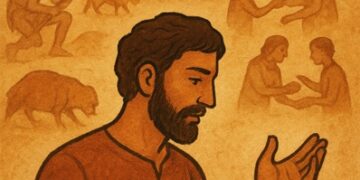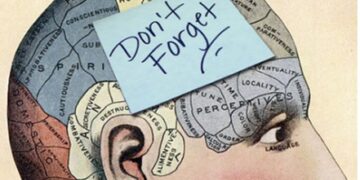There was a time when the Darbar Move made sense. There were no servers, no scanners, no internet. Records were stored in rusted trunks and wooden almirahs that smelled of camphor and damp paper. To govern meant to carry the government – physically – on mule backs and trucks from one capital to another. The Maharaja’s men did it with a sense of ritual grandeur, half bureaucracy, half circus.
But that was a century ago. In 2025, when even street vendors use QR codes and panchayat files are uploaded to cloud servers, the idea of moving an entire government – its clerks, drivers, ministers (cats are a new fad, some may even have dogs), and their entourages – from one city to another is not merely absurd. It is a parody of governance.
And Omar Abdullah has just decided to bring that parody back. There are parodies everywhere!
Digital Era, Feudal Mindset
Abdullah-led government’s decision to restore the biannual Darbar Move reeks of nostalgia for a past that should have been archived, not revived. The entire argument – that it balances regional sentiments, boosts Jammu’s economy, and preserves heritage – would have sounded noble if it weren’t so hollow. Governance today is digital. Signatures are e-signs, seals are electronic, and most files exist only as PDFs – unless you want to open them in Jammu, where the air is cozy in winters, and in Kashmir, where the air is cozy in summers.
If the Chief Minister wants to sign a file, he can do it on his tablet while flying over the Banihal tunnel. If a secretary wants to access a report, he can log in from his living room. So, what exactly is this Move about? Moving files or moving furniture? Moving governance or moving holiday destinations?
Let’s not kid ourselves. The Darbar Move today is nothing more than a colonial pageant – a ceremonial migration of mediocrity. And mindlessness.
The Cost of Pretending to Work
Each Darbar Move costs the exchequer crores. Convoys of vehicles, thousands of employees, their allowances, the accommodation expenses – all this for what? To sit in different chairs under different roofs, while the same work (or non-work) continues? The only files that seem to move with any speed are the ones related to travel reimbursements.
In a state gasping for healthcare, education, and employment, this ritualistic relocation is financial vandalism dressed as heritage.
It’s as if the government, having failed to deliver substance, has chosen to deliver spectacle instead. The Darbar Move is the new political theatre – one that burns diesel while governance burns out.
The Mirage of “Balance”
NC government’s defenders say it is about regional balance – that Jammu must not feel ignored. That argument might have carried weight if there was actual governance to balance. During his tenure in Kashmir, Abdullah’s government was invisible – not because it was online, but because it was absent. If he could not govern from the Gupkar hills overlooking Srinagar, why should anyone believe he will perform miracles from the secretariat in Jammu?
Changing coordinates doesn’t change conviction. Incompetence has no postal address.
A Caravan of Empty Chairs
When the files are already digital, the only thing that actually moves in a Darbar Move is people – clerks, drivers, peons, and politicians. The sight of thousands of employees dragging office registers and houseplants across the highway might have been amusing if it weren’t tragic. It’s a bureaucratic pilgrimage without a deity.
The government’s new circus could be marketed as “Tourism of Governance.” There’s drama, there’s motion, there’s even the illusion of purpose. The only thing missing is governance itself.
Imagine the scene: ministers posting selfies on the Jammu highway with captions like “Moving governance closer to people”. Perhaps we should all applaud. Because in an administration where nothing moves, even motion without meaning feels like progress.
A Lesson in Futility
The British did it in the 19th century because the summer heat in Delhi was unbearable. The Maharajas copied them because they loved pomp and protocol. But in a democracy, moving the capital every six months only demonstrates one thing – that the rulers are yet to choose a place to serve rather than a place to stay.
In the age of cloud servers and video conferencing, a government that still needs to “move” to function is confessing its own impotence. When private companies operate global supply chains from laptops, our politicians still need a train of trucks to move their files. That’s not governance – that’s governance cosplay.
Symbolism Over Substance
Omar Abdullah calls it a revival of tradition. Tradition of what? Of wasted public money? Of inconvenience to lakhs of employees? Of slowing down work just when people expect efficiency? There is nothing traditional about waste, and nothing modern about nostalgia that cripples progress.
True revival would mean reviving transparency, not trucks. Reviving accountability, not air-conditioned convoys. Reviving integrity, not inflated symbolism.
When a leader who failed to be visible in Kashmir promises visibility in Jammu, one must ask: is the move geographical or optical? Because visibility requires light, and this government has been running on darkness for too long.
People Want Delivery, Not Drama
Let’s be honest: nobody in Jammu or Kashmir is waiting for the Darbar Move. People want delivery – of governance, not speeches. They want uninterrupted electricity, efficient hospitals, secure jobs, safe streets, clean water. These are the movements that matter – the movement of progress, not the movement of bureaucrats.
If Omar Abdullah truly wanted to balance regions, he would have moved development, not desks. If he truly wanted to restore heritage, he would have preserved temples, schools, and orchards, not dusty office corridors.
Governance is not a dance between two capitals. It is the quiet rhythm of work done honestly, whether from Jammu, Srinagar, or a 10×10 office in a remote block.
A Failure Repackaged as Reform
In truth, this government’s resurrection of the Darbar Move is a confession – that it has nothing new to offer. Like an old magician who has run out of tricks, it brings back the same illusion, dusts it, and presents it as innovation.
When the spotlight of expectation turns harsh, some leaders reach for nostalgia. They invoke the past not to honor it, but to hide behind it. The Darbar Move is that hiding place – a convenient distraction from questions about governance, development, and vision.
Perhaps the Chief Minister believes that the sight of moving convoys will create an impression of a government in motion. But motion is not momentum, and activity is not achievement.
The Bitter Truth
The bitter truth is this: Jammu and Kashmir don’t need a moving government. It needs a working one. It doesn’t need trucks full of files. It needs decisions that touch lives. It doesn’t need nostalgia about Darbars. It needs a future that works on merit, technology, and justice.
Governance is not about where you sit; it’s about what you do when you sit.
If Omar Abdullah wants to make history, he should move corruption out of offices, not offices out of cities. Move red tape out of the system, not secretariats out of Srinagar. Move the fear out of governance, not furniture out of buildings.
Until then, his Darbar Move will remain what it has always been – a moving circus of static minds. A procession of pomp in a state that desperately needs performance.
Dual-Capital Models Elsewhere – What Worked, What Didn’t
| Country / State | Capitals & Functions | Why Adopted | Outcome & Lessons |
|---|---|---|---|
| South Africa | Pretoria (executive), Cape Town (legislative), Bloemfontein (judicial) | Post-Boer-War compromise among rival regions | Partial success – distinct functions and symbolism, but costly coordination. Works only with fixed institutional division. |
| Bolivia | La Paz (exec + legislative) / Sucre (judicial) | To calm regional rivalry | Moderate success – reduced conflict, yet coordination remains awkward. |
| Netherlands | Amsterdam (cultural) / The Hague (administrative) | Historic prestige vs. practicality | Success – close distance + digital systems make duality seamless. |
| Malaysia | Kuala Lumpur (commercial) / Putrajaya (administrative) | KL congestion | Success – modern planned city built for e-governance; permanent shift, not shuttling. |
| Nigeria | Lagos (former) / Abuja (current) | Ethnic & geographic balance | Success – permanent relocation improved neutrality; Lagos stayed economic hub. |
| Chile | Santiago (exec + judicial) / Valparaíso (legislative) | To decentralize | Partial – symbolic, legislators still prefer Santiago. |
| Germany | Bonn (former) / Berlin (current) | Cold-War split, later reunification | Success after final unification; duality only transitional. |
| India (Maharashtra) | Mumbai (main) / Nagpur (winter session) | To placate Vidarbha region | Symbolic gesture; negligible administrative gain. |
| India (Andhra Pradesh) | Amaravati / Visakhapatnam / Hyderabad (shared)** | Regional appeasement post-bifurcation | Failure – confusion, protests, stalled projects. |
| Sri Lanka | Colombo (exec + judicial) / Sri Jayawardenepura Kotte (legislative) | To ease congestion | Success – proximity (11 km) keeps system efficient. |
| Tanzania | Dar es Salaam (commercial) / Dodoma (administrative) | Inland development | Partial – transition slow, expensive but progressing. |
What These Cases Show
- Dual capitals succeed when functions are permanently divided and geography allows easy coordination.
- They fail when the same bureaucracy travels back and forth for optics or nostalgia.
- Every modern model relies on digital communication, not convoys of clerks.
Implication for J&K
Omar Abdullah’s Darbar Move doesn’t resemble any of the successful cases. It shifts the same paperless offices physically between two cities already linked by networks and servers. Globally, governments either decentralize power or centralize efficiency; J&K alone romanticizes relocation. In short: the world moved to the cloud – Jammu & Kashmir is still moving the cupboard.





